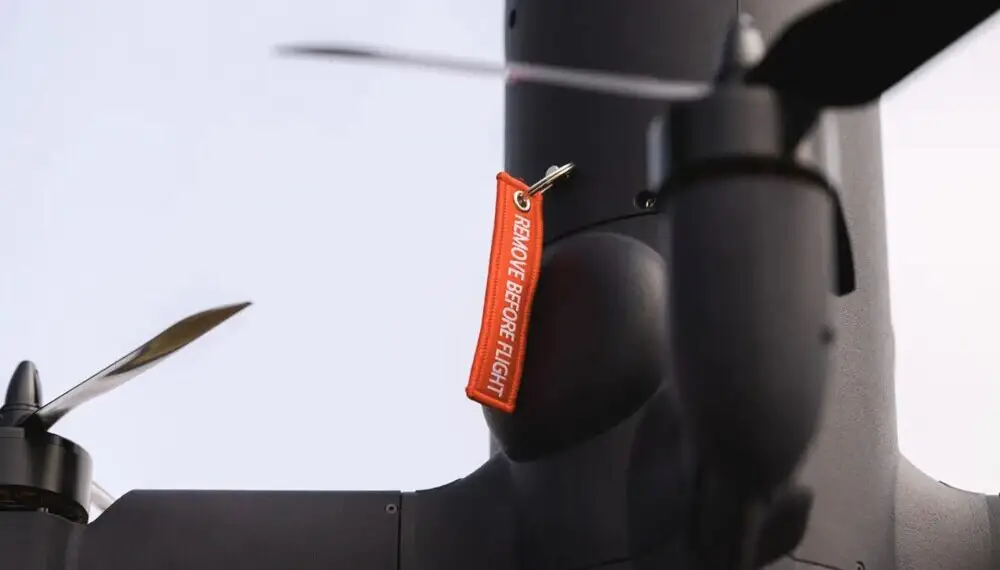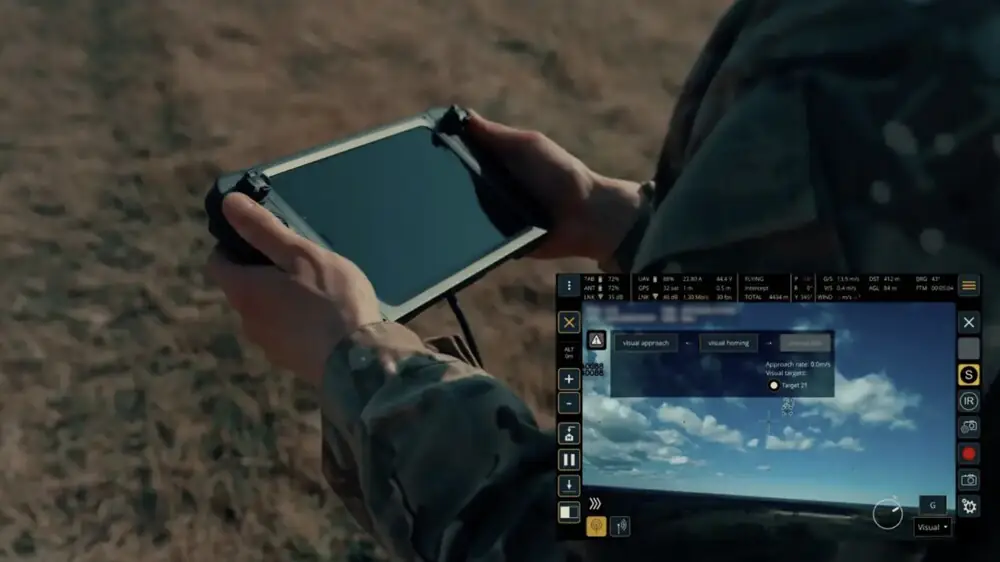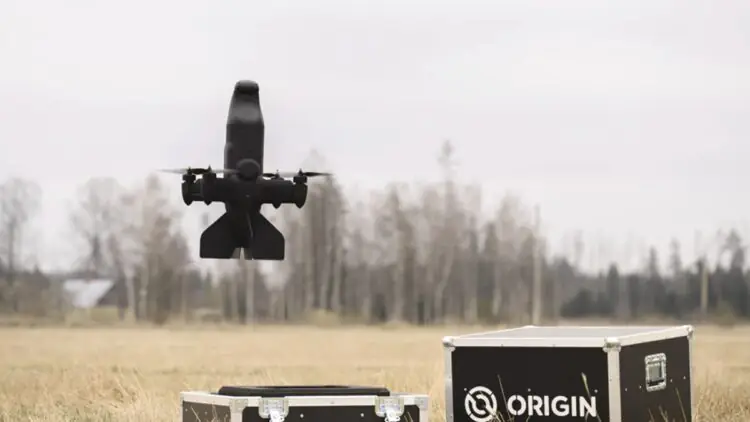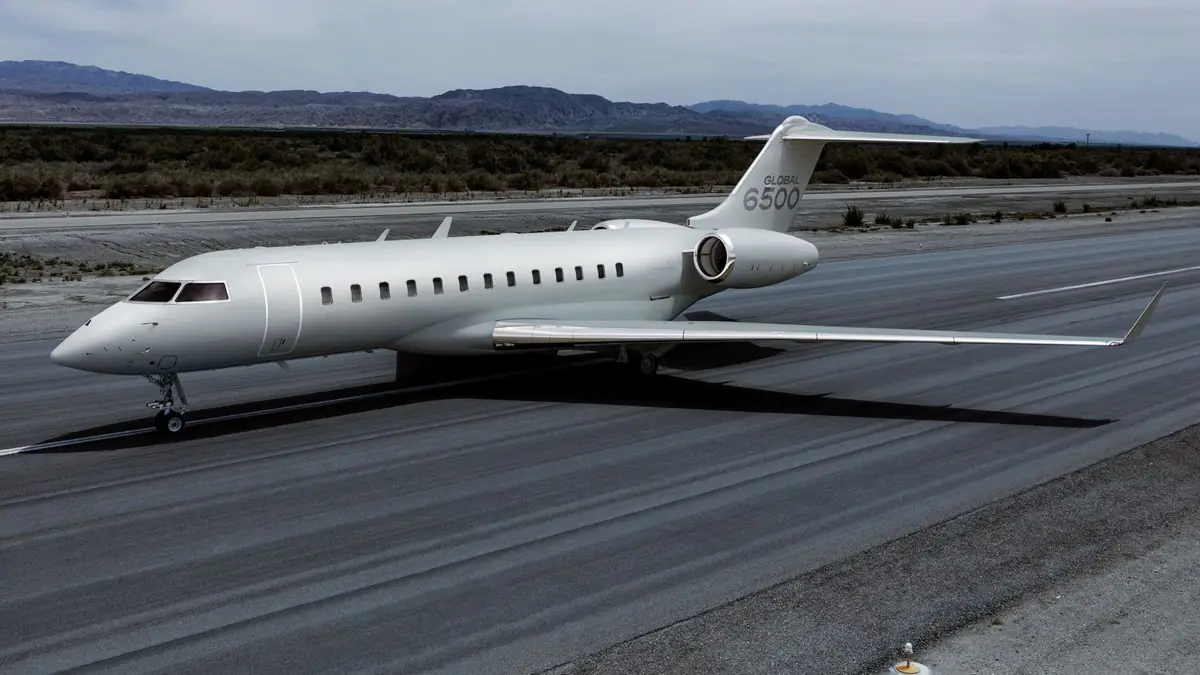Today we’re taking a closer look at the new BLAZE interceptor drone, recently introduced by Latvian company Origin Robotics. Designed to counter threats like Russian Shahed drones, BLAZE is positioned as a potentially effective tool on the modern battlefield.
Warfare is increasingly shifting away from the cinematic image of traditional combat and beginning to resemble a real-time strategy game – though with very real consequences. This shift has led military developers around the world to explore the concept of lightweight unmanned aerial systems designed specifically to intercept other drones or precision-guided weapons. With Ukraine’s airspace saturated by low-cost, lethal UAVs, BLAZE enters the scene as a potential disruptor. Developed by Latvian startup Origin Robotics, the autonomous interceptor aims to strike a balance between combat capability and cost-efficiency.
The BLAZE UAV has an unassuming design. It fits inside a compact case that also serves as a docking station, charger, and launch platform. This all-in-one approach allows for rapid deployment – just a few minutes from unpacking to liftoff – which can be critical in wartime conditions.
The drone operates autonomously, though it remains under human supervision until the final moments of its mission. The system also includes a “wave-off” function, allowing it to abort or self-destruct if, for instance, it locks onto a friendly UAV by mistake. Let’s take a closer look at the features and functionality of this interceptor drone.
Read also: Everything Known About the Experimental UAV General Atomics A2LE
TABLE OF CONTENT:
Means of interception
Origin Robotics is a relatively new company based in Riga, Latvia, and it entered the UAV market from the outset. One of its earlier developments was the BEAK quadcopter, built using off-the-shelf components and designed to carry a light combat payload. This drone has already reached small-batch production and has reportedly been delivered to Ukraine.
The BEAK functions as a compact bomber, capable of carrying up to 4 kg of payload and engaging targets at distances of up to 15 kilometers by dropping munitions. If needed, it can also be equipped in the field with a reconnaissance module.
According to the manufacturer, BEAK is one of the most cost-effective precision-strike UAVs currently available. It uses military-grade components, which sets it apart from many Ukrainian and Russian FPV drones that are typically assembled using consumer-grade parts.
The key advantage of the BEAK drone is its ability to drop munitions from higher altitudes with greater accuracy than many of its competitors. This is made possible by specialized software that improves targeting precision, even when using unguided bombs.
Just a few days ago, Origin Robotics shared details about its latest UAV project. The new drone, named BLAZE, is designed as a lightweight interceptor. Its primary role is to engage larger-class combat drones or other airborne targets of similar size and weight during flight.
According to its developers, the BLAZE UAV is intended to fill a tactical gap between anti-aircraft artillery and full-scale missile systems. Compared to traditional guns, the drone offers longer range and a more powerful warhead. At the same time, it is significantly – often dramatically – cheaper than surface-to-air missiles with similar or superior performance.
While the idea of using the drone as a single-use platform might raise concerns about cost-effectiveness, Origin Robotics argues that BLAZE is at least ten times less expensive than most of the aerial targets it’s designed to neutralize. In contrast, high-end military drones can cost tens or even hundreds of thousands of dollars, and missiles used to shoot them down aren’t much cheaper. Although the company claims to have met its cost-efficiency goals for BLAZE, the exact price of the interceptor has not yet been disclosed.
At this stage, the BLAZE project is in the prototype assembly and testing phase. Official materials from Origin Robotics include photos and videos showing the drone in action at a test range. The footage covers the launch preparation, takeoff, flight, and the final seconds before engaging a training target.
The company plans to finalize development of the BLAZE UAV in the near future and bring it to market. Ukraine is expected to be the first potential customer, with Origin Robotics aiming to use its deployment there as a form of real-world demonstration to support future sales.
Read also: All About the NGAS Tanker Aircraft Project and Its Prospects
Unmanned system
As part of the BLAZE project, both the interceptor UAV and its supporting equipment have been developed. This includes a transport-launch container, an operator’s console, and several other devices. The system is designed for easy transportation by any suitable vehicle and can be rapidly prepared for use.
The core of the interception system is the original UAV, which follows a “tailsitter” design. This configuration combines features of both an airplane and a quadcopter, offering the flight characteristics of both types of aircraft.
The drone’s airframe is made of plastic or composite materials. Its foundation is a streamlined fuselage, with four wings and a stabilizer of similar design mounted onto it. The front section of the drone houses an optical-electronic system for target acquisition and guidance. Other compartments contain the control systems, battery, and the warhead.

At the wing tips, four fixed propulsion units are mounted, each consisting of an electric motor and a propeller. The motors, whose exact type has not been disclosed, are powered by a shared battery. This propulsion system enables the drone to take off vertically and transition to horizontal flight. Mode changes and maneuvers are achieved through the synchronous or differential adjustment of the thrust from the various motors.
The exact flight specifications for the BLAZE UAV have not yet been released. However, information on its intended target set allows for some assumptions about its performance. The interceptor is expected to fly at speeds of at least 200-250 km/h, with a flight range of more than 5-7 km.
Origin Robotics offers a combined target acquisition and guidance system for the BLAZE interceptor UAV. At the front of the drone, there is a miniature optical-electronic system with two degrees of freedom, along with an active radar homing head. The optical-electronic system (OES) uses a camera and thermal imager to scan the airspace, while the radar homing head is responsible for target lock-on and engagement.
In all operating modes, the video feed from the OES and the data from the radar homing head are transmitted to the operator’s console via a radio link. The operator can monitor the UAV’s operation and issue commands. Additionally, the system is equipped with artificial intelligence software that simplifies target detection and recognition. However, the final decision on whether to engage remains in the hands of the operator.
Inside the BLAZE UAV is a small-sized fragmentation and high-explosive warhead. The detonation occurs upon contact with the target or when passing close to it within a minimum distance. If necessary, the drone can also strike the target with impact, without an explosion.
The BLAZE UAV is transported in a specially protected container and is designed to take off directly from it. The bottom of the container serves as a kind of launch pad, while the top is a removable cover. Once positioned, the preparation for the first launch takes just over 5 minutes. Subsequent launches can be made at intervals of 1 minute.

The tail-sitter UAV takes off independently without the need for any additional devices. It is also capable of performing a vertical landing, whether because no target was found or if the operator decides to recall it for another reason.
Read also: All About the Turkish UAV Bayraktar Kizilelma: Development History and Prospects
New solution
The concept of a specialized intercepting UAV capable of engaging other drones or similar aerial targets is relatively new but has already gained significant popularity. Companies from various countries are developing their own versions of such technology, and now a new interceptor has been introduced by a Latvian firm.
The BLAZE project is built on several interesting ideas that, in theory, allow for achieving the desired results. The proposed interceptor drone is relatively simple to manufacture and operate, is expected to be cost-effective, and should demonstrate sufficient combat capabilities. Additionally, the developer company is counting on a high probability of interception, ensured by the presence of two targeting systems.
During recent tests, the BLAZE drone demonstrated its targeting capability on a small quadcopter. The developers believe that this UAV will also be capable of engaging larger and less maneuverable targets. Primarily, for well-known reasons, Russian Shahed drones are considered as the main targets for this interceptor.

BLAZE appears to be a promising solution for armies facing the growing threat of low-cost drones used by adversaries, such as the wave of over 2,500 UAVs launched by Russia towards Ukraine in January 2025. The BLAZE system could provide an affordable and effective defense against such attacks without draining budgets.
However, there are concerns about the company behind BLAZE, which lacks significant experience in developing UAVs and control systems. This raises doubts about the reliability of both the BLAZE drone itself and its associated systems, particularly the AI-based software designed to assist the operator and guide the UAV to its target. These uncertainties could impact the overall effectiveness of the system in real-world combat scenarios.
The BLAZE UAV offers impressive flight capabilities for its class, but these may not be enough in all situations. With speeds up to 250 km/h, the interceptor would struggle to catch up with modern cruise missiles or guided bombs. Additionally, strike drones are gradually increasing their flight speeds, and some of these models are already beyond the reach of the Latvian interceptor.
Read also: All About the Rogue 1 Loitering Munition by Teledyne
Current trends
The Latvian company Origin Robotics has developed a new UAV interceptor and has taken it to the testing stage, while also beginning to search for customers. The future of the BLAZE project remains uncertain. However, the emergence of this project and some of its features indicate the presence of interesting trends.
Until now, Ukraine has often relied on FPV drones – modified consumer drones with attached explosive devices. The effectiveness of this approach has been surprisingly good, but it is far from ideal. It requires a pilot with exceptional skills and extensive experience, and such individuals are simply in short supply.
The BLAZE operates without a remote control. No joystick. No emotions. And it doesn’t get tired. Its strengths lie in automation and accuracy, with its advantages being cost and response time. For many militaries – not just Ukraine’s – this could serve as a way to complement air defense systems where speed and cost-effectiveness are crucial.
Clearly, the concept of a drone designed to intercept other UAVs is gaining popularity. Even companies and countries with limited experience in unmanned aviation are beginning to explore it. Additionally, promising technologies, such as artificial intelligence for image recognition, are becoming more widespread. However, it remains to be seen whether these newcomers can fully realize the potential of their developments and meet their expectations.
The CEO of Origin Robotics emphasizes that the demand for such solutions is highly relevant and increasing every day. The company openly admits its intention to join NATO forces across Europe. While today there is only one such drone from Latvia, it could turn out that similar machines may become key to modern, mobile, and effective air defense in the near future.
Drones are changing warfare. But it is with the new BLAZE interceptor UAV that the approach to defense against them is also evolving.
Read also:









